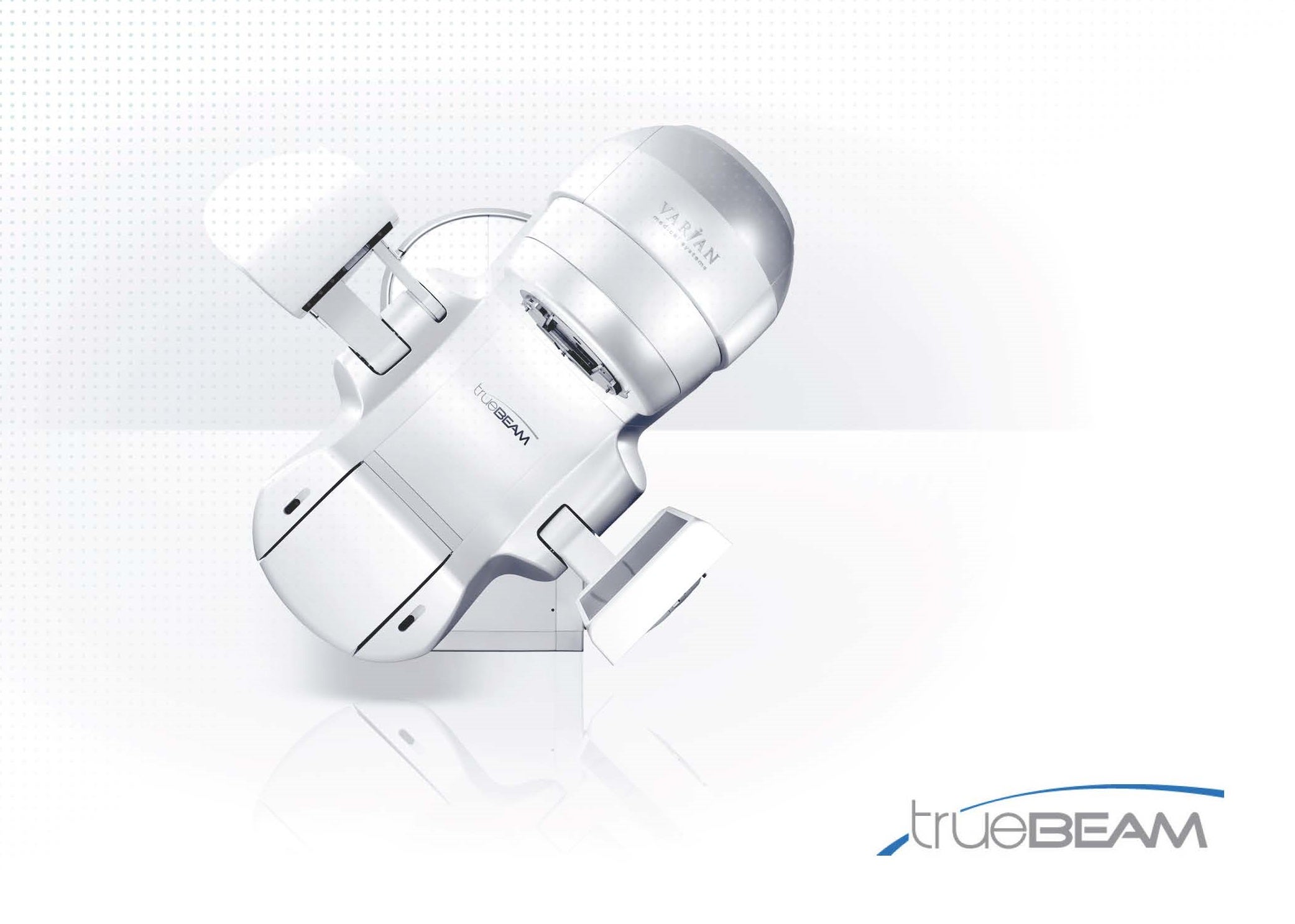TrueBeam® Technology
For Radiotherapy and Radiosurgery
How Does Truebeam Radiotherapy Work?
Developed by Varian Medical Systems, the world leader in radiotherapy oncology solutions, TrueBeam uses high-energy X-rays (photons), or in some cases, streams of electrons, to destroy cancer cells. When you undergo a TrueBeam treatment, a precisely-shaped beam hits the cancerous cells. Their ability to reproduce is compromised and they eventually die, causing the tumor to shrink.
In the U.S., two out of three people with cancer undergo some form of radiotherapy as part of their treatment, according to the American Society for Radiation Oncology (ASTRO). The fact that radiotherapy has been used as a part of cancer treatment regimens for many years speaks to its effectiveness at fighting cancer.
Advantages of Truebeam Treatment
- Noninvasive: There is no incision or surgery with TrueBeam and no post-surgery recovery period.
- Fast: The ability to deliver higher doses of radiation at great speed allows most treatments to be given in just minutes a day.
- Precise: TrueBeam uses a highly sophisticated imaging system that allows doctors to “see” the tumor they’re treating in real time and target it with pinpoint precision. Even tumors that move when you breathe — those in the lungs, for example — can be precisely targeted thanks to special tools that compensate for motion during a treatment.
- Versatile: TrueBeam can be used to deliver advanced radiotherapy or radiosurgery, giving doctors the flexibility to use whatever protocol is appropriate for your particular cancer. Because of its versatility, TrueBeam gives us options to treat cancers in even challenging places like the head and neck, lungs, breast, abdomen and liver.
- Individualized: Every tumor is different, and TrueBeam can shape the radiation beam to accurately match the size and form of most tumors regardless of their shape. It uses a device called a multileaf collimator that shapes the treatment beam precisely to match the shape of the tumor from any given treatment angle, minimizing exposure of the surrounding healthy tissue.
- Comfortable: A closed-circuit television system enables your radiation therapist to watch you during treatment, and two-way audio lets you talk with the therapist. TrueBeam runs so quietly, you can even listen to music during treatment to help you relax.
Truebeam Can Deliver Many Advanced Types of Radiotherapy
- Intensity-Modulated Radiotherapy (IMRT). A technique in which doctors vary (or modulate) the amount of radiation that is sent to different parts of your tumor while shaping the beam to match the shape, size, and position of the targeted tumor.
- Image-Guided Radiotherapy (IGRT). Uses advanced imaging that allows the clinical team to visualize and verify the exact position of your tumor both prior to and during your treatment.
- Stereotactic Radiosurgery (SRS). A fast treatment protocol that omits more powerful beams to treat tumors in the brain over only 1-5 sessions.
- Stereotactic Body Radiotherapy (SBRT). A technique that’s similar to SRS, used to treat tumors elsewhere in the body.
- Volumetric Modulated Arc Therapy (VMAT) i.e., RapidArc® radiotherapy. Enables treatments that once took 10-30 minutes to be delivered in less than two minutes.
- Gated treatment, including Gated RapidArc. Monitors your breathing and turns the beam on only when your tumor is in the optimal position for treatment.
What Happens During Trubeam Treatment, Step By Step
- Tumor Visualization. During this process, 3-D images are generated of your tumor, which enables your doctor to know its size and shape. With this information, your doctor can best determine the dose of radiation you’ll need and how to deliver it most effectively.
- Treatment Planning. After the size, shape and volume of the tumor are determined, your treatment team uses sophisticated software to create a three-dimensional image of the area of your tumor. They will then develop a detailed treatment plan that specifies the amount of radiation the tumor should receive, from what angles, and a schedule for treatment.
- Treatment Delivery. A radiation therapist will guide you into the treatment room and help position you on the treatment table. Just prior to treatment, images will be taken so that the therapist can verify the tumor’s exact location. The therapist then leaves the room, and your treatment begins. The machine that creates the beam will rotate around you. Closed-circuit television and two-way audio enable the therapist to stay in constant contact with the patient. The process will most likely take only a few minutes, but sometimes the first treatment takes a little longer because some additional setup is required.
- Follow-up Care. After your treatment, you’ll see your doctor for follow-up care. During this time, he or she will monitor your progress. This is an opportunity to ask your doctor any questions, raise concerns about any side effects or inquire about your treatments and the status of your health.
This information is intended as a general guide to TrueBeam. It does not replace a full discussion with your doctor and healthcare team. You should know that radiotherapy, including TrueBeam radiotherapy, is not appropriate for all types of cancer. Although your actual treatment times may vary, typical radiotherapy treatments are delivered once a day for a series of weeks. Typical radiosurgery treatments (SRS and SBRT) are delivered in only one to five treatments.
Serious side effects that may occur are treatment-site specific and can include diarrhea, nausea, swelling at the treatment site, lymphedema, pneumonitis (inflammation of lung tissue), and secondary cancer. Talk to your doctor about what you can expect from your treatment and to find out if treatment with the TrueBeam radiotherapy system is right for you.
© 2021 Varian Medical Systems, Inc. All rights reserved. Varian and Varian Medical Systems are registered trademarks of Varian Medical Systems, Inc.
For more information about TrueBeam, download the brochure (8.87 MB), the FAQs (121 KB), visit www.varian.com/truebeam or call 954-492-5764.

